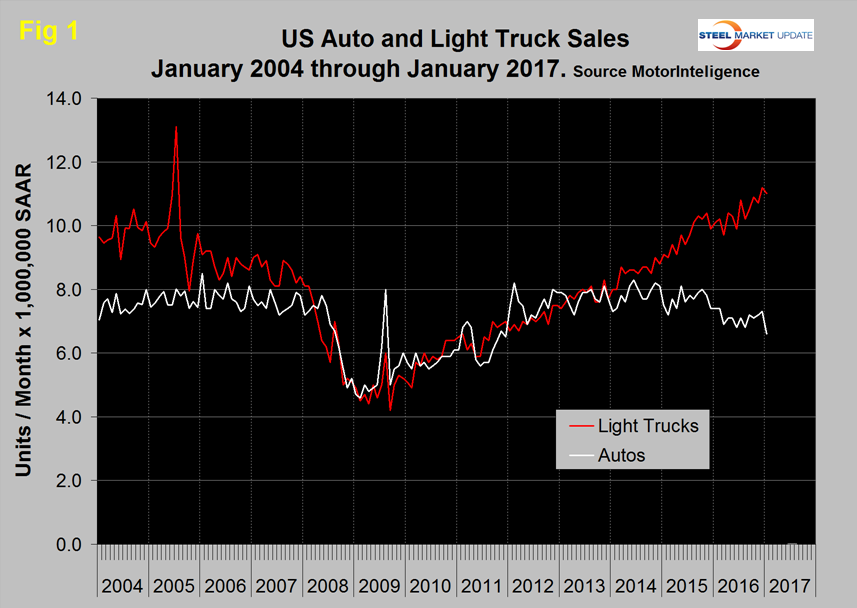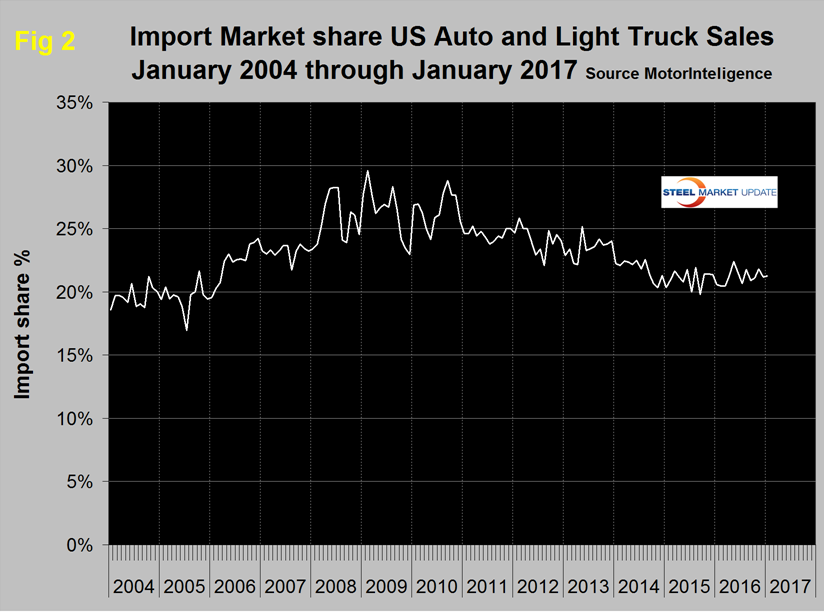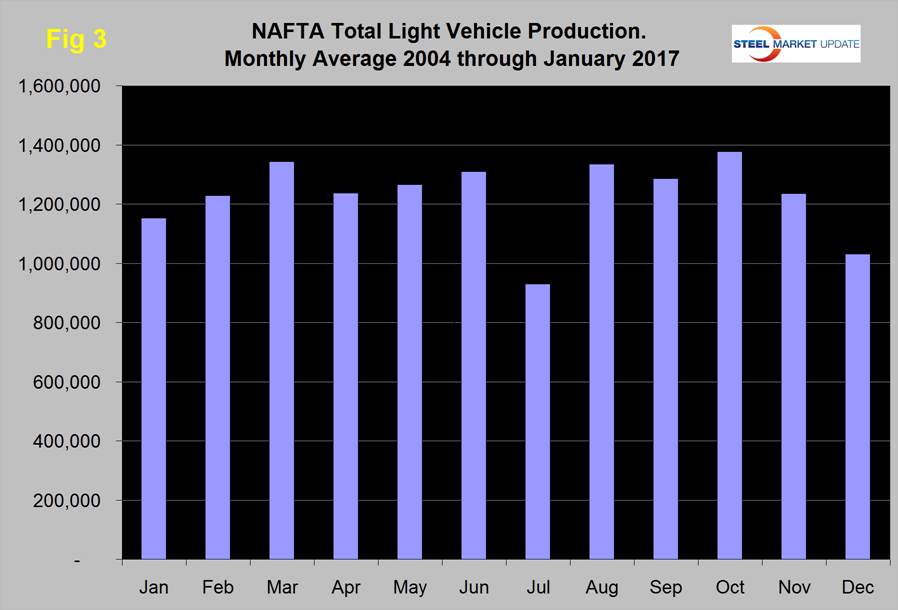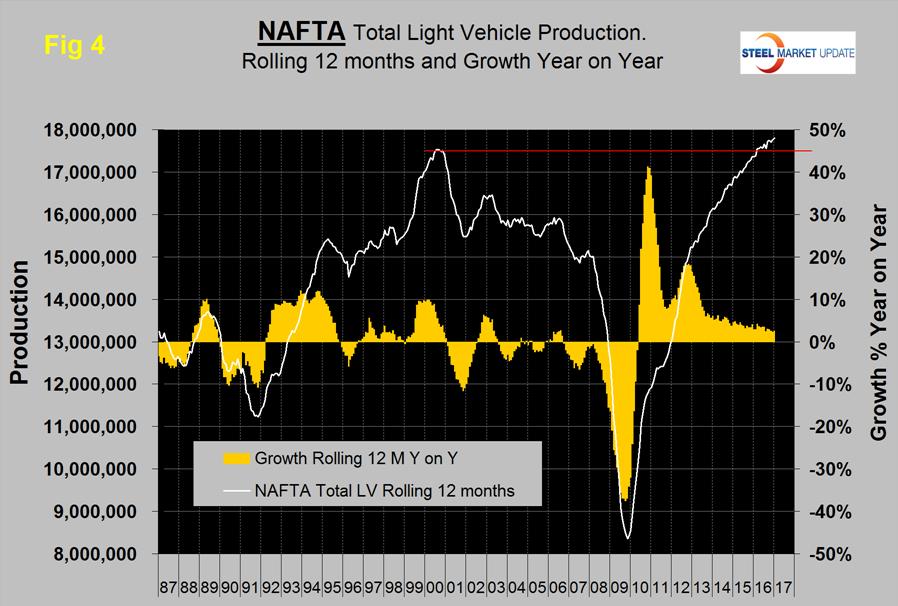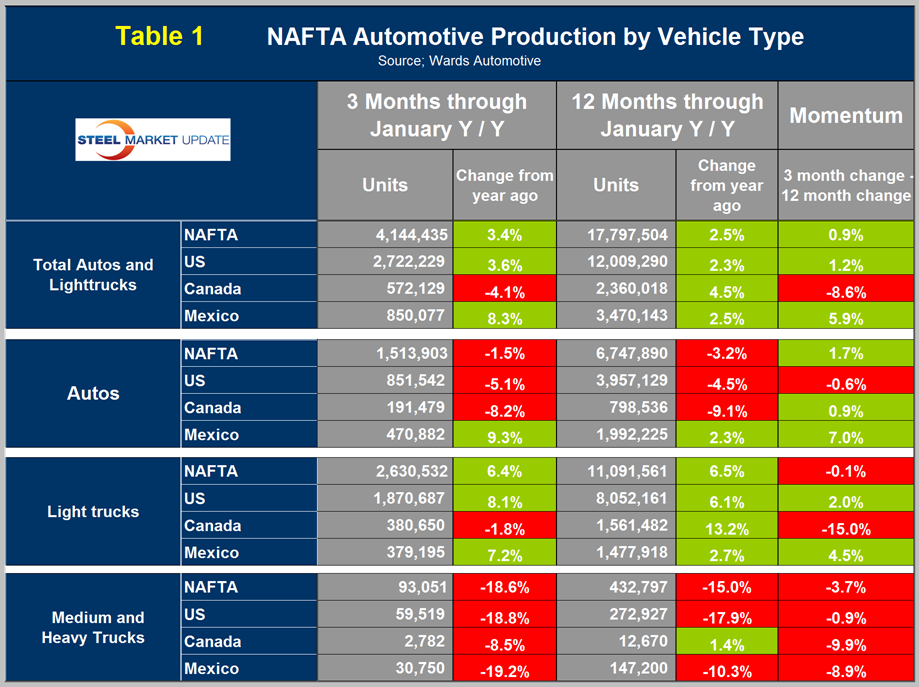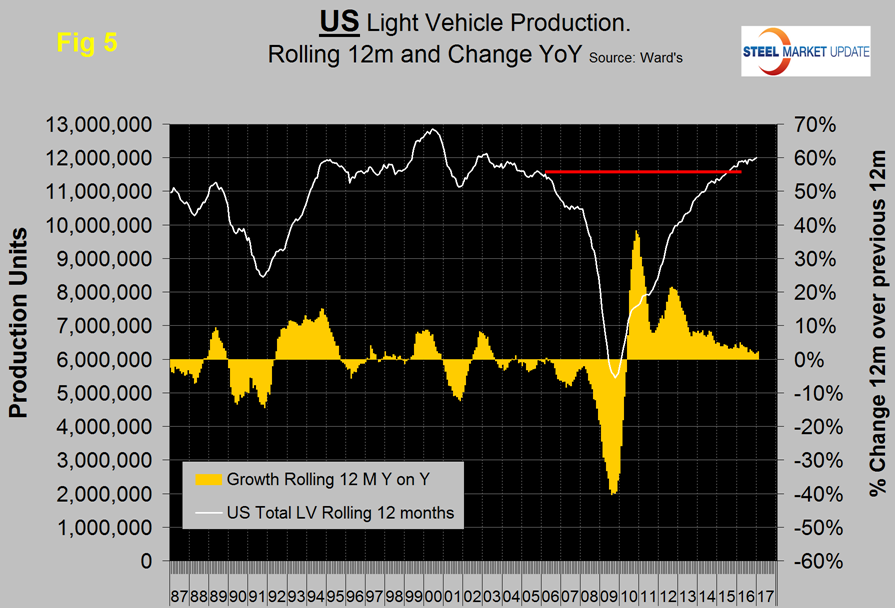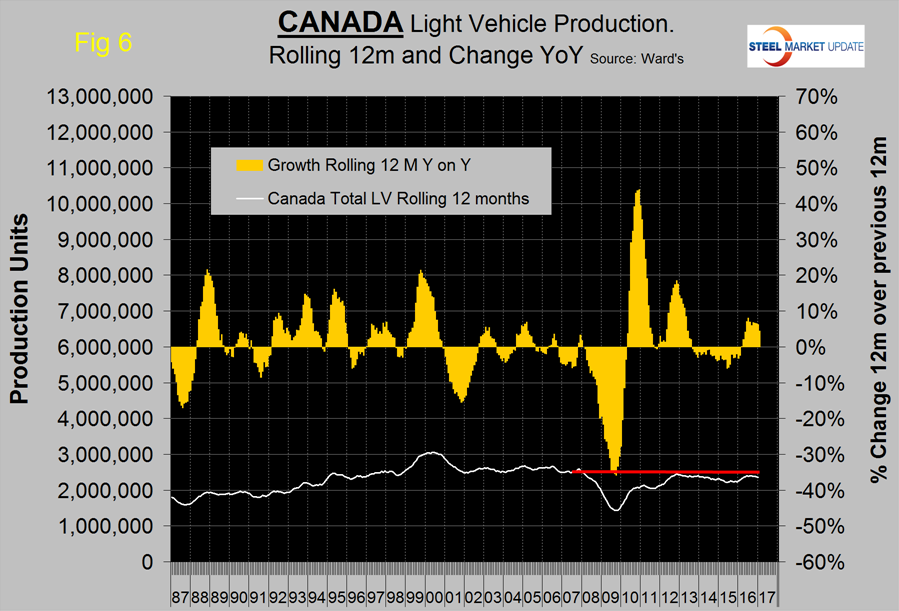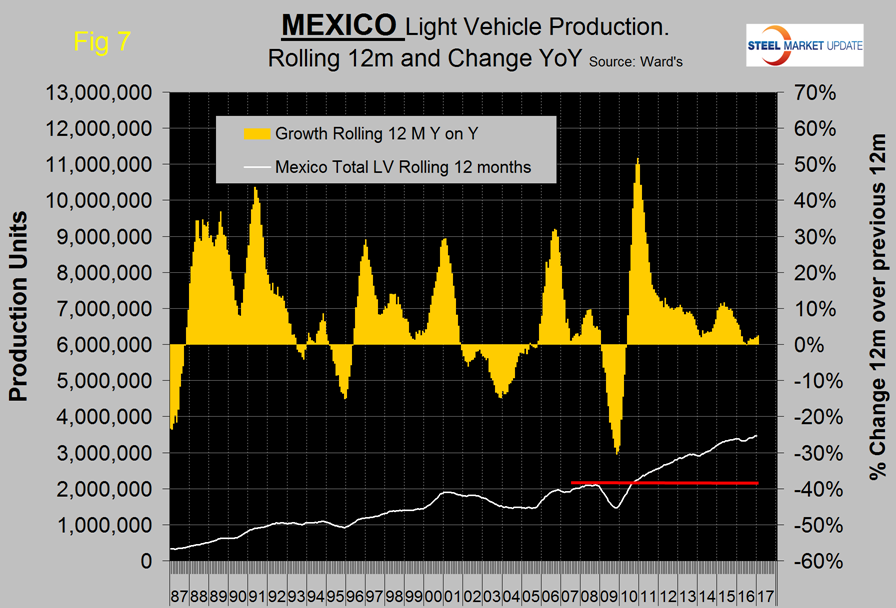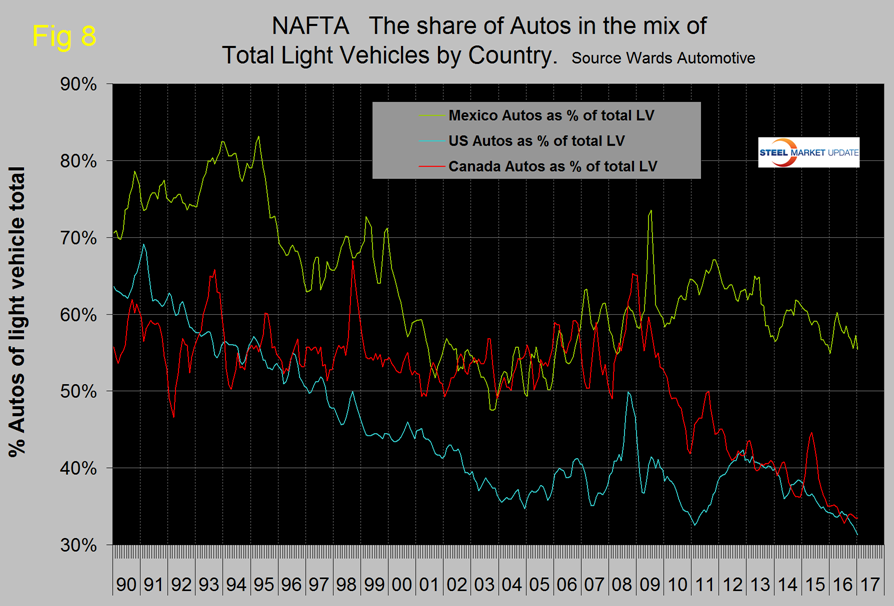Analysis

February 24, 2017
US Vehicle Sales and NAFTA Vehicle Production through January 2017
Written by Peter Wright
In January US light vehicle sales fell to 17.6 million units from 18.4 million in December on a seasonally adjusted annual basis. The decline was almost entirely in the car sector as shown in Figure 1.
Even though sales declined they were still a bit stronger than expected. Drivers are (no pun intended) employment gains and wage growth, healthy construction spending, and relatively easy access to credit. Imports were down from 4.0 million units to 3.8million but their market share was unchanged at 21.2 percent (Figure 2).
Total light vehicle (LV) production in NAFTA in January was at an annual rate, of 16.64 million units, up from 15.2 million in December. On average since 2004, January’s production has been 11.8 percent higher than December. This year production was up by 9.7 percent therefore slightly weaker than normal (Figure 3).
We can expect production to increase in February and March. Reminder: production numbers are not seasonally adjusted: the sales data reported above are seasonally adjusted.
On a rolling 12 months basis y/y through January, LV production in NAFTA increased by 2.5 percent which was up from 2.3 percent in 12 months through December. There has been a very gradual slowdown in growth for the last three years as indicated by the brown bars in Figure 4, however production has been at an all-time high every month since early 2016.
On a rolling 12 months basis y/y the US was up by 2.3 percent with positive momentum, Canada was up by 4.5 percent with very negative momentum and Mexico was up by 2.5 percent with positive momentum (Table 1).
The seven months July through January were the first months for Mexico to have positive momentum after fourteen straight months of slowdown. Canada experienced negative momentum in July through January following very strong momentum in the previous six months. On a rolling 3 months basis y/y since early 2016, Mexico has gained production share mainly at the expense of Canada (Figure 5) and the Mexican and US shares have been almost mirror images of each other as production has shifted backwards and forwards across the border with not much net change.
In January on a rolling three month basis, the US production share of total light vehicles was 65.7 percent which was lower than the 67.2 percent average for 2016. Canada’s was 13.8 percent which was better than the 13.4 percent average for 2016. Mexico’s was 20.5 percent and was better than the 19.3 percent average for 2016. Production in Mexico in 2014 was 3.194 million units, in 2015 was 3.386 million units and in 2016 was 3.458 million units. The Mexican production target for 2020 is 5.0 million units according to Eduardo Solis, president of the Mexican Automotive Industry Association.
Figures 5, 6 and 7 show total LV production by country with y/y growth rates and on each the red line shows the change in production since Q2 2006.
Note the scales are the same to give true comparability and that Mexican growth slowed significantly through the first half of 2016 and has recovered slowly since then. During the recession Mexico declined by less than the US and bounced back by more during the recovery. This caused Mexico’s production share to surge until Mid-2011 at the expense of the US. We are all now awaiting the “Trump” effect.
Figure 8 shows that the percentage of autos in the light vehicle production of each country has been declining for all three since 2012, driven by consumer buying preferences which in turn are heavily influenced by gas prices.
The change in preference for light trucks tends to favor the US and Canada over Mexico because the mix of light vehicle production capacity is so different by country. The percentage of autos in the Mexican mix in the last three months was 55.4 percent but only 31.3 in the US and 33.5 percent in Canada. This means that Mexico has staked out a higher relative capacity in autos which will serve it well when gas prices eventually rebound.
Ward’s Automotive reported this week that total light vehicle inventories in the US were 85 days at the end of January, which was up from 62 days at the end of December and up from 77 days at the end of January last year. Month over month FCA (Fiat Chrysler Automotive) was up by 10 days to 92, GM was up by 37 to 108 days and Ford was up by 22 to 95 days.
The SMU data file contains more detail than be shown here in this condensed report. Readers can obtain copies of additional time based performance results on request if they wish to dig deeper. Available are graphs of auto, light truck and medium and heavy truck production and growth rate and production share by country.



